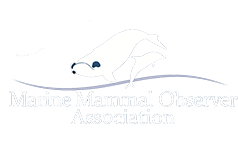 BRAHSS - Behavioural Response of Australian Humpback whales to Seismic Surveys, is a 6 year collaborative study, investigating the effects of seismic airguns on the behaviour of humpback whales during migration. The study aims to assess how humpback whales respond to seismic airguns during seismic surveys. It is one of the largest and most complex behavioural response studies ever undertaken on cetaceans. BRAHSS is a collaboration between the Universities of Queensland, Sydney, Curtin University and the Defence Science and Technology Organisation, and field work included participants from several other organisations and volunteers.
BRAHSS - Behavioural Response of Australian Humpback whales to Seismic Surveys, is a 6 year collaborative study, investigating the effects of seismic airguns on the behaviour of humpback whales during migration. The study aims to assess how humpback whales respond to seismic airguns during seismic surveys. It is one of the largest and most complex behavioural response studies ever undertaken on cetaceans. BRAHSS is a collaboration between the Universities of Queensland, Sydney, Curtin University and the Defence Science and Technology Organisation, and field work included participants from several other organisations and volunteers.
This project as a whole aims to provide information that will reduce the uncertainty in evaluating impacts of seismic surveys on humpback whales, leading to management and mitigation measures that allow surveys to be conducted efficiently with minimum impact on the whales.
Peregian beach, two hours north of Brisbane, has been a hub of humpback whale research on the east coast of Australia since 2002 when a project known as HARC – the Humpback whale Acoustic Research Collaboration – started there. In many ways BRAHSS has become an extension of HARC, building on the data sets and methodologies developed from 2002-2009 field seasons, but also including significant additional acoustic measurements. BRAHSS is a Behavioural Response Study (BRS) otherwise known as a Controlled Exposure Experiment (CEE), the aim of which is to help us better understand how humpback whales respond to sounds from seismic air guns. To assess behavioural responses accurately we need to know how the whales’ responses might differ from those produced by natural stimuli (e.g. wind generated sea noise, conspecific sounds) or other anthropogenic sounds (e.g. passing ships and recreational vessels), and how social context might affect their responses. Singing whales, particularly their interactions with other non-singing conspecifics, will also be studied as part of BRAHSS. The data collection includes collecting behavioural data on whales as they move through the study area, conducting real-time, simultaneous acoustic and visual tracking of whales, exposure to real seismic air guns, the deployment of DTAGs, and the collection of fluke photographs and skin biopsies. The sound field is measured at many points throughout the study area to provide acoustic characterisation of the site and sound propagation.
BRAHSS 2014 was the fourth and final experimental year of the BRAHSS project. This field season followed studies conducted at this site in 1997, 2002, 2003, 2004, 2008, 2009, 2010 and 2011. The 2010 field season was the first year of the current BRAHSS study which focused on measuring the reactions of whales to a 20 cubic inch (cu in) seismic air gun and was very successful. In 2011 we completed the 20 cu in trials and moved on to other treatments with a larger array (a ramp up sequence to 440 cu in and a one hour exposure to a 140 cu in array of air guns). In 2012 we had an ‘analysis year’ to try to work our way through the huge amount of data collected in 2010 and 2011, and then in 2013 we moved to Western Australia where we carried out more trials using the 140 cu in array. 2014 was the final experimental field season for BRAHSS where we moved back to Peregian Beach. A full-scale 3130 cu in commercial array was used so that the reactions of the whales to the air guns could be tested under as realistic conditions as our experimental set up would allow. The experimental field seasons have now all been completed successfully. A short field season will be conducted this year to collect more baseline data on normal behaviour in the absence of a stimulus further offshore. BRAHSS 2015 will be the final data collection field season for the BRAHSS project.
Over the past four field seasons there have been over 100 volunteers who have come to work on the BRAHSS project. Volunteers are a vital component of BRAHSS in collecting the land based data from several observation platforms, in assisting with acoustic data collection and in assisting with data collected from small boats. A project of this scale relies a lot on the help of dedicated and enthusiastic people and the BRAHSS project has been very lucky in having fantastic volunteers year after year.
BRAHSS is funded by the E&P Sound and Marine Life Joint Industry Program (JIP) and the United States Bureau of Ocean Energy Management (BOEM). The JIP is managed by the International Association of Oil and Gas Producers (IOGP) and sponsored by ExxonMobil, Chevron, Eni, Statoil, ConocoPhillips, BG Group, BHP Billiton, the International Association of Geophysical Contractors, Santos and Woodside with additional support from Origin Energy, Beach Energy and AWE.
Data collection and analysis is still ongoing. Results will be published sometime in the near future. Please see the BRAHSS website http://www.brahss.org.au/ and also the CEAL website http://www.uq.edu.au/whale/ceal for more information and updates on the BRAHSS project.

